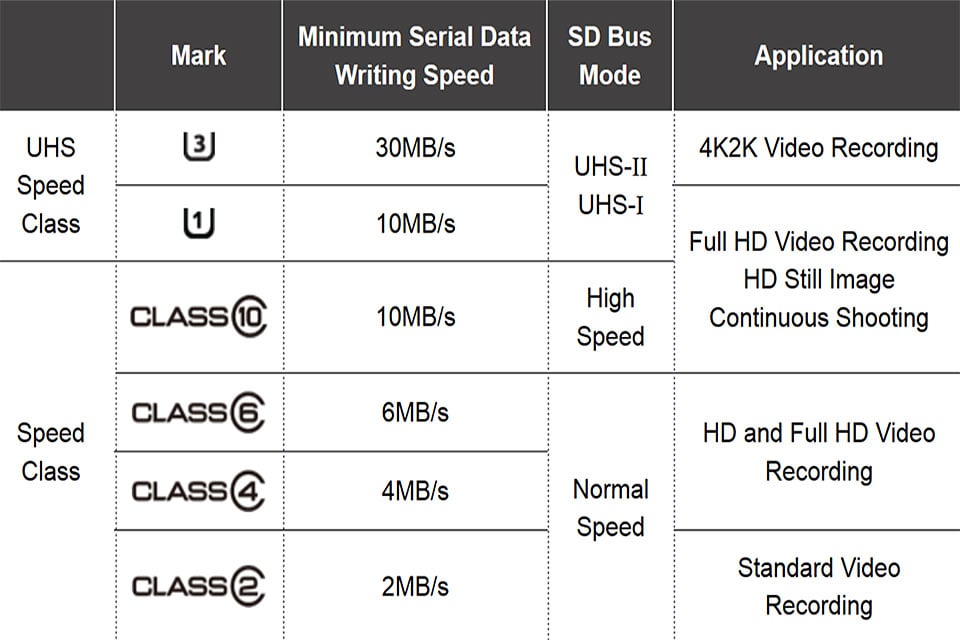Sd Card Markings
This article was sparked by a recent conversation I had with some folks at SanDisk. We were talking about the numerous types and ratings of SD cards and how there are lots of questions from users about the acronyms, labels and speed ratings associated with SD cards. In this article, we’re going to look at the different types of SD cards, along their speed class designation, and why these are important for you and your camera. By the end of this article, you should have a better understanding of what works in your camera and why. Moreover, you should be able to choose the right SD card for your camera and the way you want to use it.
What Are SD Cards? In 2000, SanDisk, Panasonic and Toshiba formed the SD Association to develop a memory card storage device that could be used across a broad range of consumer electronics. SD cards are the result of standardized specifications established by the SD Association. There are currently 3 different form factors for SD cards. Standard Size SD Card The most common SD card used in digital cameras today measure 24mm x 32mm and is 2.1mm thick. These cards are the most widely used for digital cameras of all sizes – ranging from compact point and shoot cameras to full-size professional DSLRs. MiniSD Card The miniSD card is 20mm x 21.5mm and is 1.4mm thick.
MiniSD cards were previously very common in cell phones; however, over the past couple of years or so we’ve seen microSD cards more widely used in cell phones, cameras and other compact electronics. MicroSD Card The microSD card is 11mm x 15mm – about the size of small child’s fingernail. MicroSD cards are common nowadays in cell phones and are being seen more and more in point and shoot digital cameras. SD, SDHC and SDXC Specifications (Card ‘Types’) The SD Association develops specifications for all SD cards and devices.

What The Markings On Sd Cards Mean
In order to use a particular type of SD card in a camera, for instance, the camera manufacturer must adhere to the SD Association’s specifications. Currently, there are 3 main SD card types – SD, SDHC and SDXC. The key difference in all of these cards is their storage capacity.
Sd Card Reader
• Standard SD cards can be made with a max capacity of up to 2GB. • SDHC cards come in capacities ranging from “greater than 2GB” to 32GB. • SDXC cards range from “greater than 32GB” to 2TB. At present, the 2TB limit is a max theoretical limit only, with most SDXC cards in the 64GB flavor. SD Card Speed Classes SD cards are classified with numerical speed classes. At present, there are 4 non-UHS Speed Classes and 1 UHS Speed Class in use.
Micro Sd Card Markings
These ratings are based on a minimum sustained data writing speed. • Class 2: 2MB/s minimum write speed • Class 4: 4MB/s minimum write speed • Class 6: 6MB/s minimum write speed • Class 10: 10MB/s minimum write speed • UHS Speed Class 1 (UHS-I): 10MB/s minimum write speed Note that the card type (SD, SDHC or SDXC) is different from the card speed class (Class 2, 4, 6, etc.). The speed classes were established in order to clearly identify the constant speed requirements for video capture. Again, these speed classes are minimum requirements and SD card manufacturers can define constant minimum write speeds that are higher than the speed class designation of the SD card.